Summer is right around the corner. Where I live, rain is in the forecast every day this week. And we know what heat and rain bring to our gardens.
WEEDS!!
Lots and lots of weeds, and in my case, tons of briers.
So today, I’m going to share a few things that I’ve learned to use to fight the battle.
Cardboard is your friend. Most of us get a ton of Amazon packages and other deliveries. Sometimes I’m more excited about the box than what comes in it. Break the box apart… there’s usually one side where it’s glued, and if you cut that side, the box folds out flat. Take off any plastic tape, because it won’t decompose like the rest of the box will. Make sure to take out any staples. You can lay these boxes in your beds, around your plants, under trees, and cover them with mulch. You will never know the boxes are there, and they won’t cause future problems like landscape fabric does when weeds root and grow into it, and you have to rip all of it out later. The cardboard boxes just disappear over time, but will hold the weed growth back sometimes for two seasons.
I recently dug up a long row of daylilies in front of my garden fence. Tilled the area to get rid of weeds and briers. Added cardboard and mulch, then planted the daylilies back on top of the cardboard in the mulch. They are doing well and and should remain weed free this year.
I also use tarps. When I have a garden bed full of weeds that I want to clear out, I’ll place a dark colored tarp over it and leave it to bake in the sun for a few weeks. When I go back and remove the tarp, the weeds have died and melted down so they are easy to rake out and clear the bed for planting.
Another strategy I learned recently is to pack your raised beds as tightly as possible with all your good plants. That way, there’s no room left for weeds to grow.
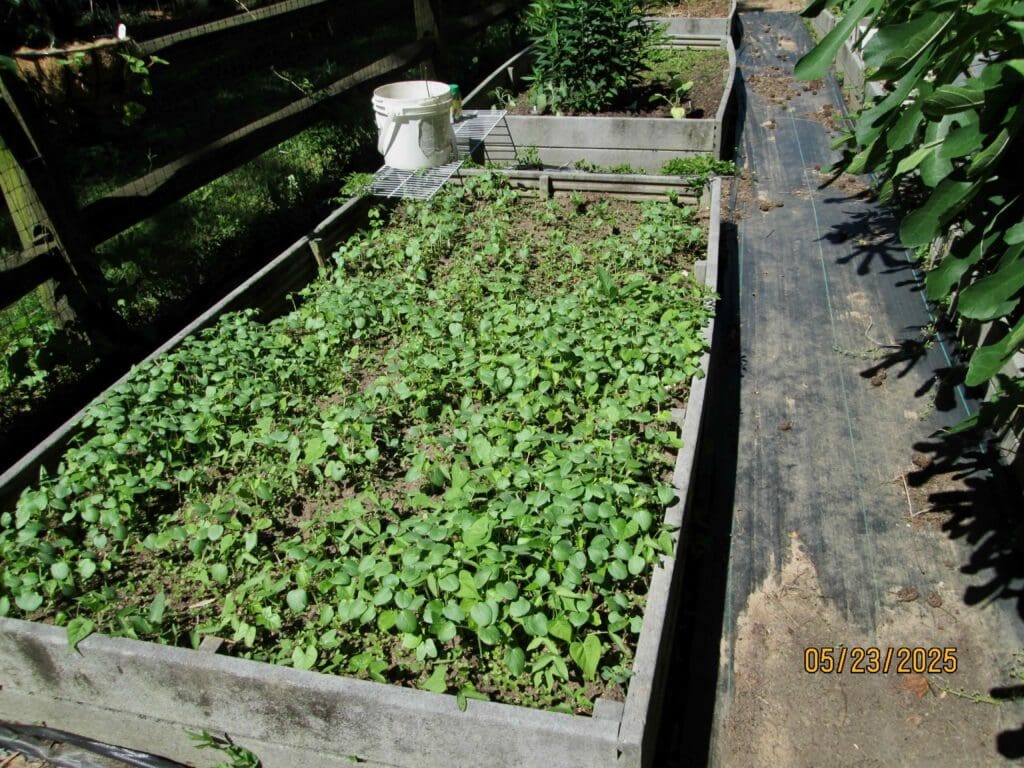
Here is my okra bed. I broadcast the seed in it. There are a few weeds interspersed, but I’m hoping to see the okra get bigger and shade them out. I’ve never planted okra like this before, and I’m looking forward to watching and learning from the results.
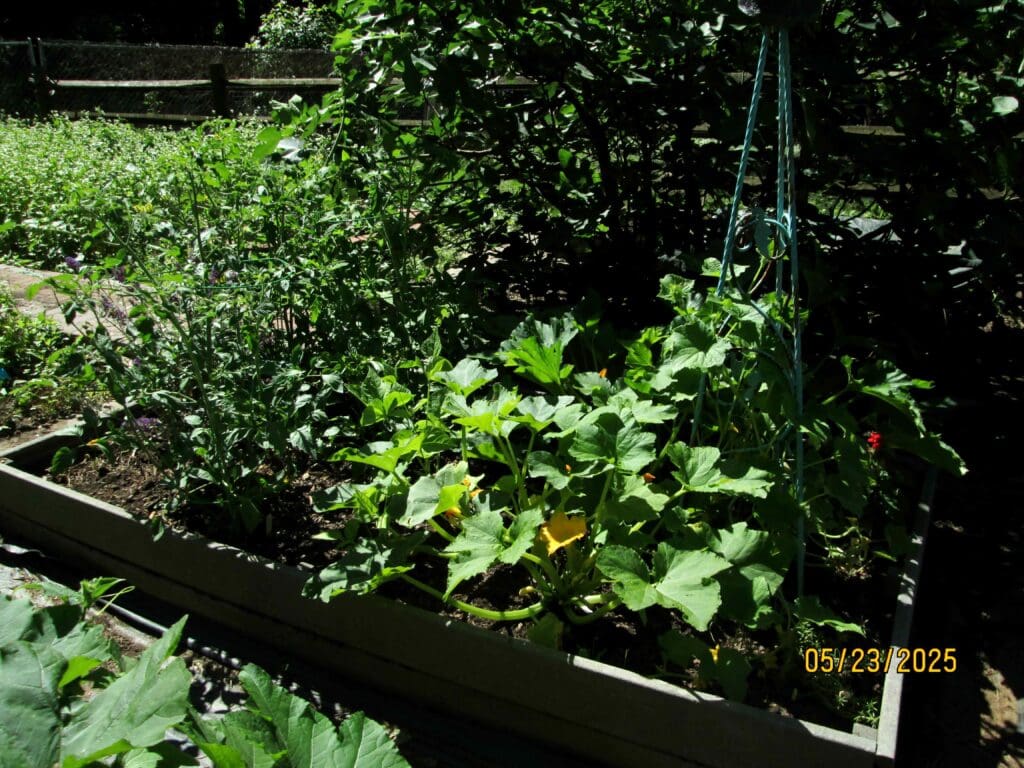
Here is another example of a tightly planted bed. This is one of my grandson’s garden beds. I see two empty spaces on the corners for him to fill next time he comes.
Growing plants in containers and hanging baskets is another way to have some control over the weeds. If a weed seed occasionally blows in and roots, you can easily pull them out.
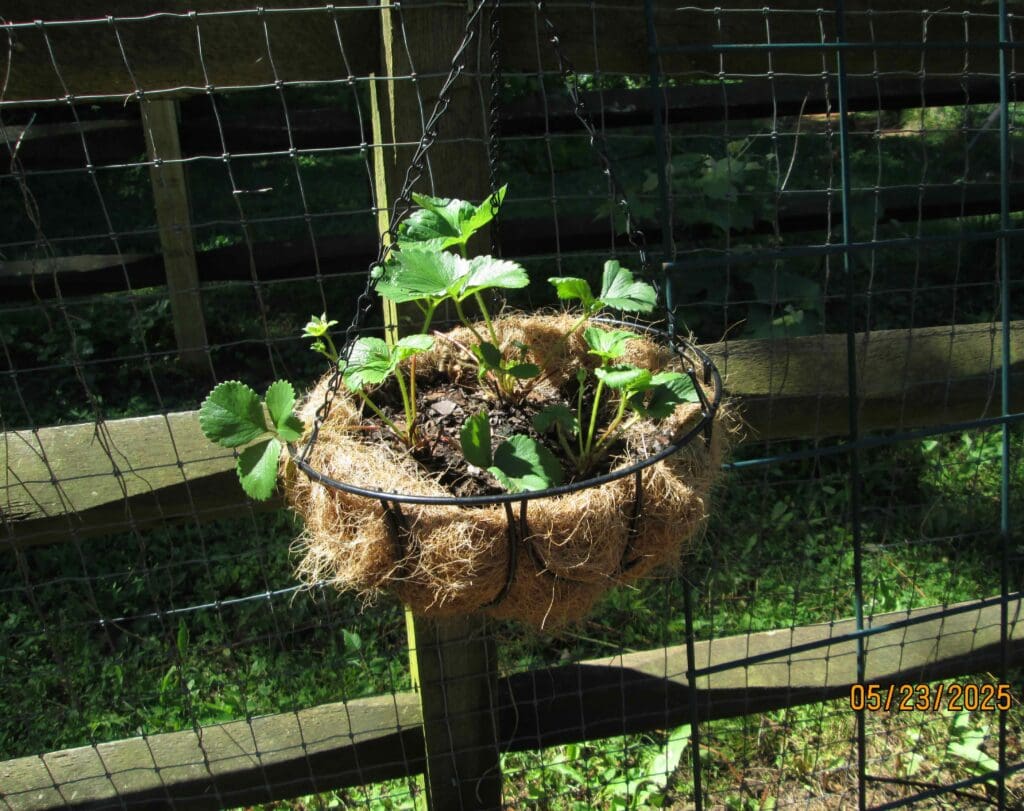
And last of all, my brother sent me a YouTube video on how to make your own safe weedkiller.
To a garden sprayer, mix:
- I gallon of 30% vinegar which is 6 times stronger than regular vinegar (I ordered mine from Amazon. And I used the box it came in for weed control.) ☺️ Win Win
- 1/4 cup of salt
- 2 squirts of dawn dish detergent
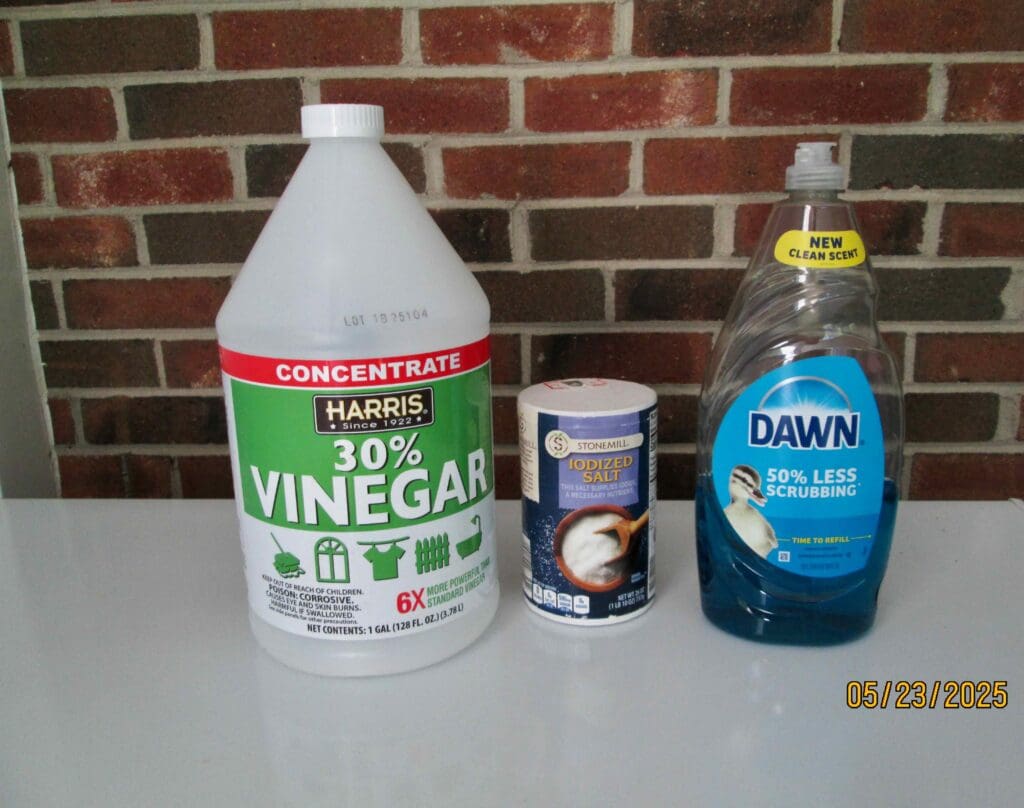
The first day I sprayed, it didn’t look like anything was happening. So I sprayed again the next day and it really begin to work. Some areas in the pictures below were only sprayed once with great results.
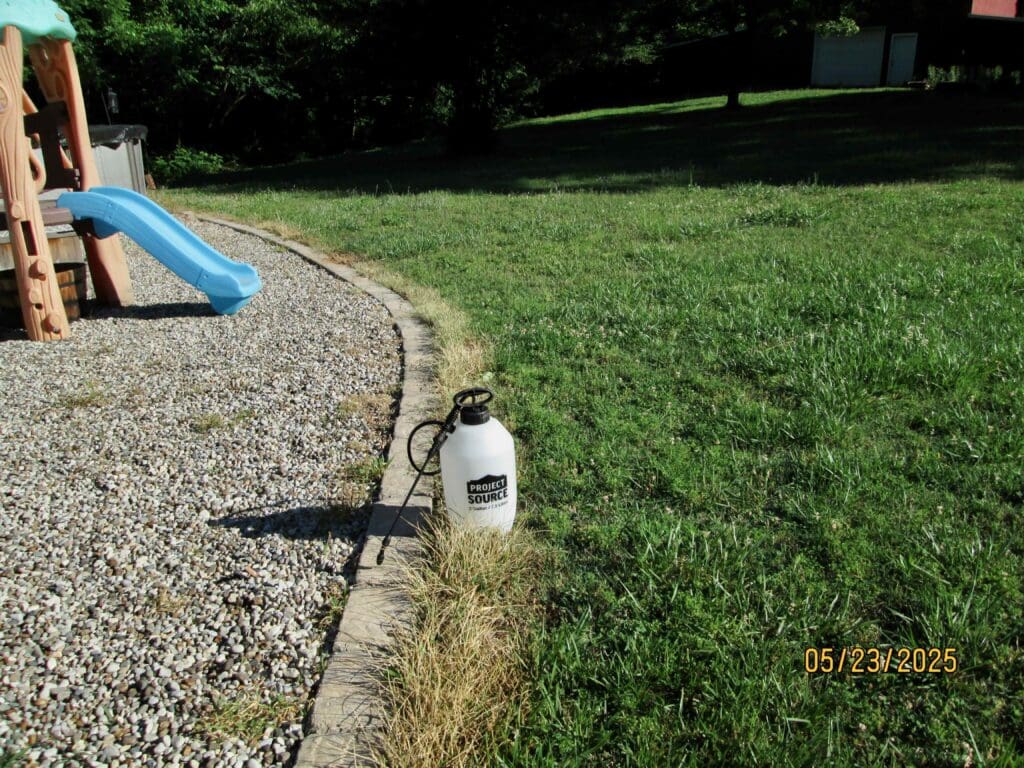
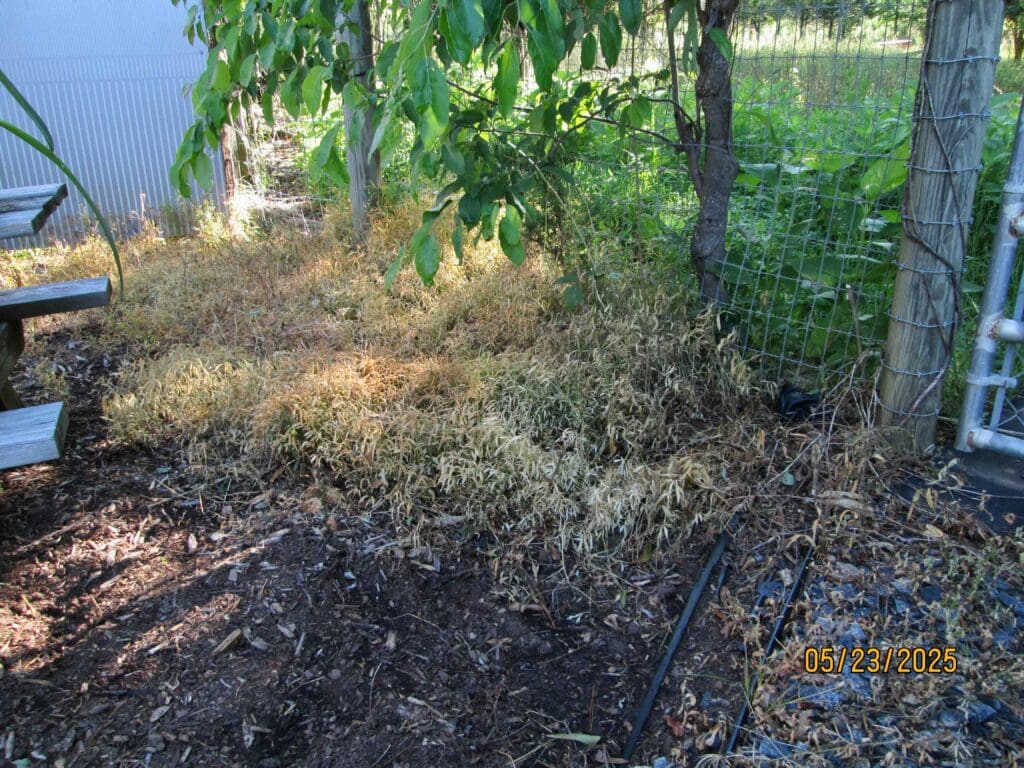
This area got these results from only one spray.
Make sure there is no rain in the forecast before spraying. It is best to spray on hot sunny days.
This recipe is safe to use for yourself and pets. The vinegar is strong, however, so if the day is windy, make sure you’re spraying downwind because the fumes can make your eyes water. I have a great sprayer and after 20 pumps on the handle, I can walking around spraying everything I need it to cover. When I store the sprayer, I release any pressure that is left in the container.
Once all those weeds are taken care of, you can enjoy the beauty and fruit of your labors.
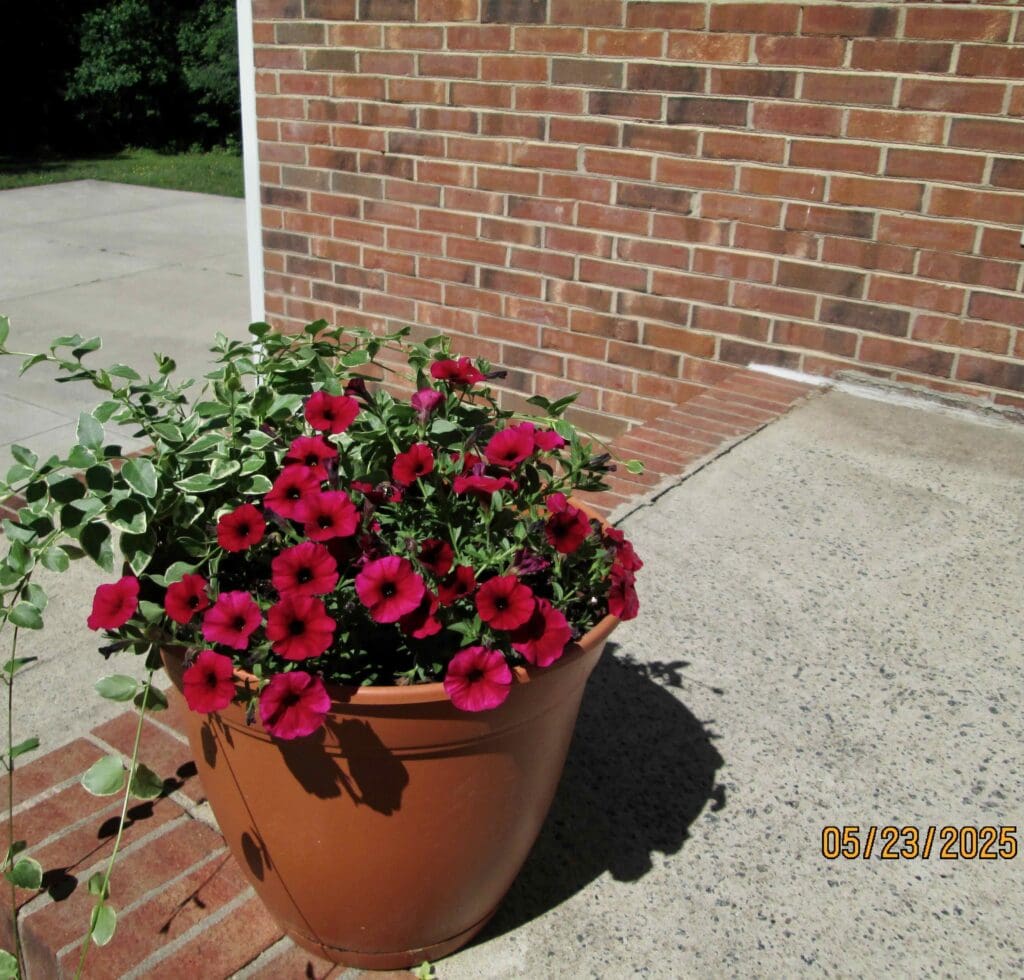
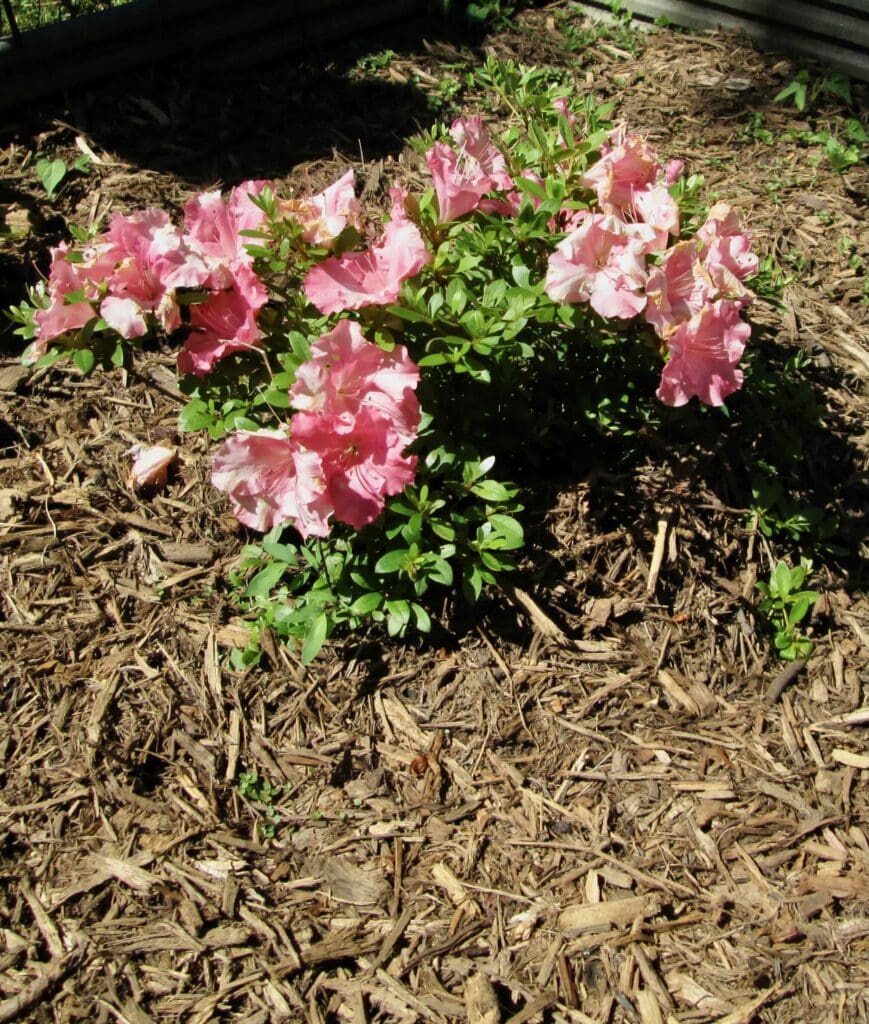
“Now the LORD God had planted a garden in the east, in Eden; and there He put the man He formed. The LORD God made all kinds of trees grow out of the ground — trees that were pleasing to the eye and good for food.” Genesis 2:8-9 (NIV)
“The LORD God took the man and put him in the Garden of Eden to work it and take care of it.” Genesis 2:15 (NIV)
Enjoy your beautiful plants while you work in your garden, and have a great week!

Thank you for the great info. Your flowers and garden are beautiful. I know your hard work will pay off in fresh vegetables soon!
Thank you, Joni. I’m definitely hoping for some fresh vegetables to improve my health.